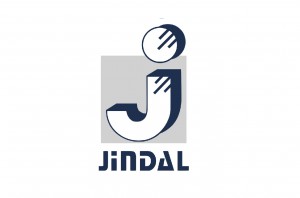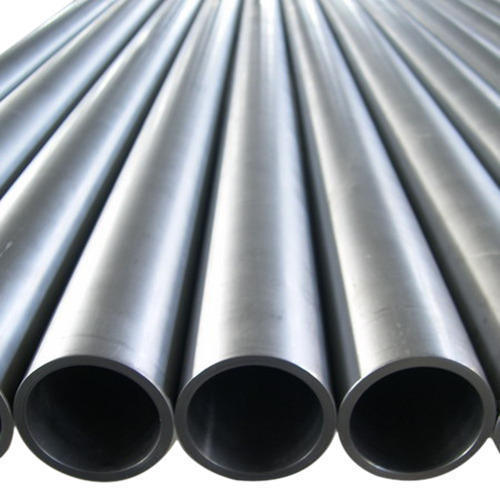
DUCTILE IRON PIPES AND FITTINGS
Strategic Partnership with Jindal Saw Group
Jindal Saw Limited the pioneer in the tubular industry
Jindal Saw’s ductile iron (DI) pipes have high quality mechanical properties, in addition to high durability and strength, which make them ideal for high-pressure applications. Ductile Iron Pipes are used extensively in systems transporting portable water, industrial water, irrigation water and pressure sewage.
Ductile iron is produced by treating the molten low-sulphur base iron with magnesium under closely controlled conditions. The starting change in the metal is characterized by the free graphite in ductile iron being deposited in the spheroidal or nodular form, leading to maximum continuity of metal matrix thereby forming a stronger and tougher ductile material with high ductility and impact strength.

Technical Specifications
| Standard of Product | Ductile Iron Pipe suitable for Push on-jointing* |
| Class of Pipe | C20, C25, C30, C40, C50, C64, C100, PP, Class K7 & K9. (refer to table 1 for details) |
| Size Range | DN 80mm to DN 2200mm |
| Standard Length (in meters) | 5.5 or 6.0 |
| Internal Linings | Cement* Mortar Lining
Cement Mortar Lining with Epoxy Seal Coat Cement Mortar Lining with Bituminous Seal Coat *Cement Type: Ordinary Portland Cement/Sulphate Resistant Cement/Blast Furnace Slag Cement. |
| Outside Coatings | Zinc Coating (130 gm/m2 or 200 gm/m2 or 400 gm/m2) with fishing layer of Bitumen/Blue Epoxy/ Red Epoxy;
Alloy of Zinc and Aluminum with or without other metals having a minimum mass of 400 gm/m2 with finishing layer of Bitumen/Blue Epoxy/Red Epoxy |
| Outside Onsite Protection | Polyethylene Sleeving |
| Coating of Joint Area | Bitumen/Epoxy/Polyurethane or as per customer requirement |
| Conforming Specifications | ISO 2531, BSEN 545; BSEN 598, ISO 7186; IS 8329 |
| Jindal Saw provides solutions for pipelines subjected to unbalanced thrust forces by customized design and supply of Restrained/Anchor joint alternatives. | |
Push on Joints
Table 1: Nominal thickness chart for various classes of push on joint Ductile Iron Pipes
| DN (mm) | External Diameter DE (mm) | Nominal Pipe Wall Thickness | ||||||||||
| Various Classes of Pipes | ||||||||||||
|
Nominal |
Limit Deviations |
C20 |
C25 |
C30 |
C40 |
C50 |
C64 |
C100 |
As per BSEN-598 (Pressure Pipe) |
K7 |
K9 |
|
| 80 | 98 | +1 / -2.7 | 4.4 | 4.4 | 4.4 | 4.8 | 4.8 | 5.0 | 6.0 | |||
| 100 | 118 | +1 / -2.8 | 4.4 | 4.4 | 4.4 | 5.5 | 4.8 | 5.0 | 6.0 | |||
| 125 | 144 | +1 / -2.8 | 4.5 | 4.5 | 4.8 | 6.5 | 4.8 | 5.0 | 6.0 | |||
| 150 | 170 | +1 / -2.9 | 4.5 | 4.5 | 5.3 | 7.4 | 4.8 | 5.0 | 6.0 | |||
| 200 | 222 | +1 / -3.0 | 4.7 | 5.4 | 6.5 | 9.2 | 4.9 | 5.0 | 6.3 | |||
| 250 | 274 | +1 / -3.1 | 5.5 | 6.4 | 7.8 | 11.1 | 5.3 | 5.3 | 6.8 | |||
| 300 | 326 | +1 / -3.3 | 5.1 | 6.2 | 7.4 | 8.9 | 12.9 | 5.6 | 5.6 | 7.2 | ||
| 350 | 378 | +1 / -3.4 | 5.1 | 6.3 | 7.1 | 8.4 | 10.2 | 14.8 | 6.0 | 6.0 | 7.7 | |
| 400 | 429 | +1 / -3.5 | 5.5 | 6.5 | 7.8 | 9.3 | 11.3 | 16.5 | 6.3 | 6.3 | 8.1 | |
| 450 | 480 | +1 / -3.6 | 6.1 | 6.9 | 8.6 | 10.3 | 12.6 | 18.4 | 6.7 | 6.6 | 8.6 | |
| 500 | 532 | +1 / -3.8 | 6.5 | 7.5 | 9.3 | 11..2 | 13.7 | 20.2 | 7.0 | 7.0 | 9.0 | |
| 600 | 635 | +1 / -4.0 | 7.6 | 8.7 | 10.9 | 13.1 | 16.1 | 23.8 | 7.7 | 7.7 | 9.9 | |
| 700 | 738 | +1 / -4.3 | 7.3 | 8.8 | 9.9 | 12.4 | 15.0 | 18.5 | 27.5 | 9.6 | 8.4 | 10.8 |
| 750 | 790 | +1/ | 8.8 | 11.3 | ||||||||
| 800 | 842 | +1 / -4.5 | 8.1 | 9.6 | 11.1 | 14.0 | 16.9 | 21.0 | 10.4 | 9.1 | 11.7 | |
| 900 | 945 | +1 / -4.8 | 8.9 | 10.6 | 12.3 | 15.5 | 18.8 | 23.4 | 11.2 | 9.8 | 12.6 | |
| 1000 | 1048 | +1 / -5.0 | 9.8 | 11.6 | 13.4 | 17.1 | 20.7 | 12.0 | 10.5 | 13.5 | ||
| 1100 | 1152 | +1 / -6.0 | 10.6 | 12.6 | 14.7 | 18.7 | 22.7 | 14.4 | 11.2 | 14.4 | ||
| 1200 | 1255 | +1 / -5.8 | 11.4 | 13.6 | 15.8 | 20.2 | 15.3 | 11.9 | 15.3 | |||
| 1400 | 1462 | +1 / -6.6 | 13.1 | 15.7 | 18.2 | 17.1 | 17.1 | |||||
| 1500 | 1565 | +1 / -7.0 | 13.9 | 16.7 | 19.4 | 17.9 | 18.0 | |||||
| 1600 | 1668 | +1 / -7.4 | 14.8 | 17.7 | 20.6 | 18.9 | 18.9 | |||||
| 1800 | 1875 | +1 / -8.2 | 16.4 | 19.7 | 23.0 | 20.7 | 20.7 | |||||
| 2000 | 2082 | +1 / -9.0 | 18.1 | 21.8 | 25.4 | 22.5 | 22.5 | |||||
| 2200 | 2288 | +1 / – | 19.8 | 23.8 | 24.3 | |||||||
Note: The K-7 pipes of higher thickness as per the respective national standard can be supplied
